Animals Teaching Resources
Explore animal life in your science classroom with printable worksheets, classroom posters, and more teaching resources all about the different types of animals, their life cycles, characteristics and more!
This teacher-created collection includes a series of animal-focused teacher resources covering reptiles, birds, fish, mammals, and amphibians plus resources that classify a selection of vertebrates and invertebrates!
This comprehensive collection of teaching resources includes editable curriculum-aligned lessons on wildlife, endangered species and more — all ready to be printed and used in the classroom!
New to teaching this section of the science curriculum or looking for some fresh ideas? Read on for some tips on teaching about animal classification from our teacher team!
What Is Animal Classification? A Kid-Friendly Definition
In science class (and in professional study) animals are classified into groups based on physical and genetic characteristics. Scientists use a classification system called the Linnaean system to group different animals into progressively more specific categories, starting with the largest (and most inclusive group) and ending with the smallest and most specific group.
The categories are:
- Kingdom
- Phylum
- Class
- Order
- Family
- Genus
- Species
Helping students to remember these categories of biological animal classification, you might want to use a mnemonic such as:
- King Philip came over from Germany swimming.
- King Philip came over for good spaghetti.
- King Philip came over for good soup.
Sometimes the word "domain" is added to the top of the animal classification list, and in those cases you can add the word "dear" to your mnemonic sentences to help your students recall them all.
In the Linnaean system, every animal in nature is assigned a unique scientific name. The name includes their genus and species and it's used globally to refer to that animal — so, for example, a dog is a dog, but it's also a "canis lupus familiarise" according to its scientific name.
The animal classification system is used all around the world to help scientists understand the relationships between different animals and how they evolved over time.
Teaching About Animal Classification in Elementary School
How in-depth should your lesson planning be for animal classification? In the elementary grades, learning classifications of animals sets the stage for understanding how important this system is when scientists are studying animals in the natural world.
Consider this: In elementary school, students typically learn about the basic categories of animal classification, such as mammals, birds, fish, reptiles, and amphibians.
Your animal classification lessons can extend into learning about specific examples of animals within each category, such as lions and elephants for mammals, and eagles and penguins for birds.
By the time they head off to high school, students should already know the characteristics that define each group — such as the presence of fur or feathers (in birds) or most mammals' ability to give birth to live young. Students should also know about the classification of animals within each group, such as the different types of mammals or birds.
Ready to get started? Explore the resources in this collection!
- Free Plan
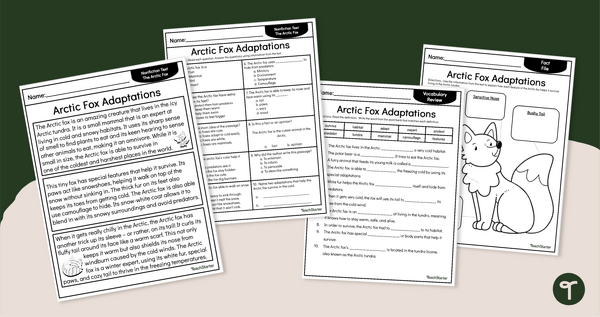
Arctic Fox Adaptations - Free Comprehension Worksheet
Read and learn about Arctic fox adaptations with a set of printable Reading Comprehension Worksheets for 2nd and 3rd grade.
- Free Plan

Paired Passage Worksheets-Mammals vs. Reptiles
Compare mammals vs. reptiles and add to your reading instruction with leveled nonfiction, compare and contrast passages, and worksheets.
- Free Plan
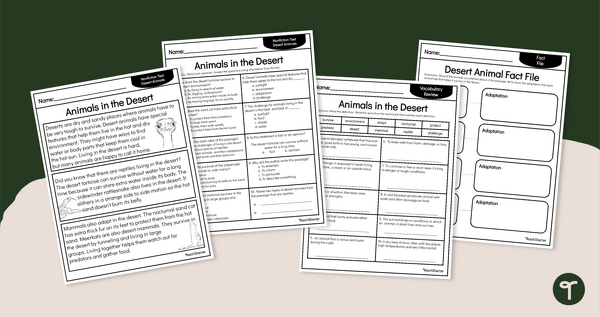
Free Desert Animal Adaptations Worksheets - Comprehension
Discover desert animal adaptations with a printable reading comprehension worksheet pack for 3rd grade.
- Plus Plan
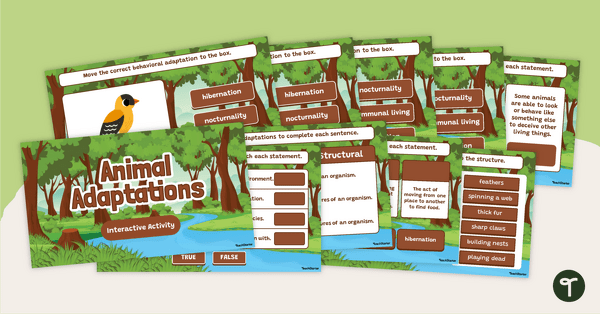
Animal Adaptations Digital Learning Activity Slides
Discover a variety of structural, behavioral, and physiological adaptations with an Animal Adaptations Digital Learning activity.
- Plus Plan
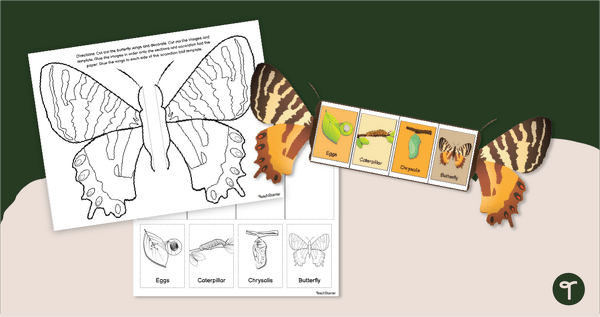
Life Cycle of a Butterfly Activity - Printable Accordion Book
Re-create the life cycle of a butterfly with a printable butterfly life cycle accordion book craft.
- Plus Plan
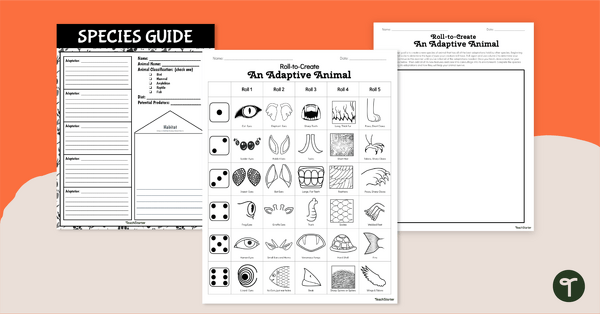
Roll to Create an Animal - Adaptations Activity
Roll to choose cool animal adaptations for a mystery animal using a fun dice game and report template.
- Free Plan
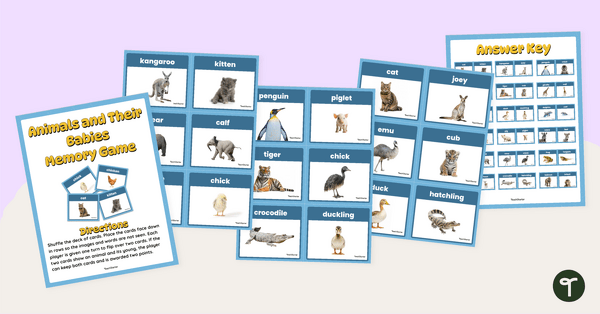
Animals and Their Babies Memory Game
Play a fun Memory-style animal game for kids to learn about animals and their babies.
- Plus Plan
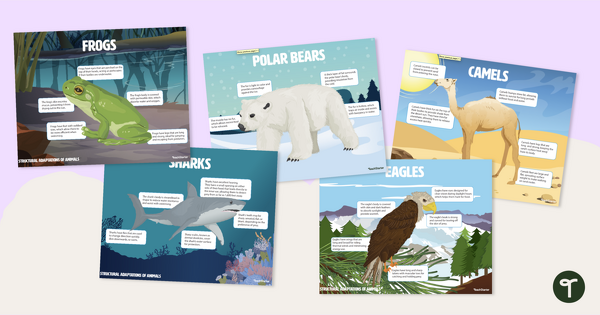
Animal Adaptations - Structural Adaptation Posters
Highlight some physical adaptations of animals with a printable set of labeled anchor chart.
- Free Plan
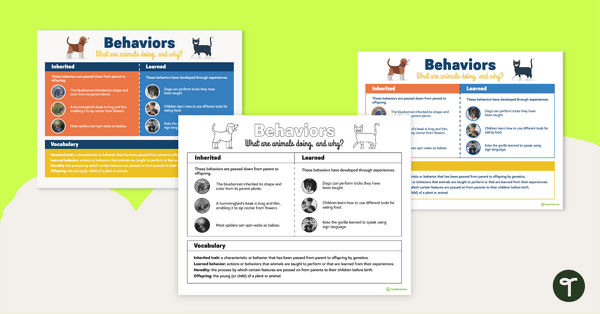
Inherited versus Learned Behaviors Poster
Explain the difference between inherited and learned behaviors with a set of printable anchor charts.
- Free Plan
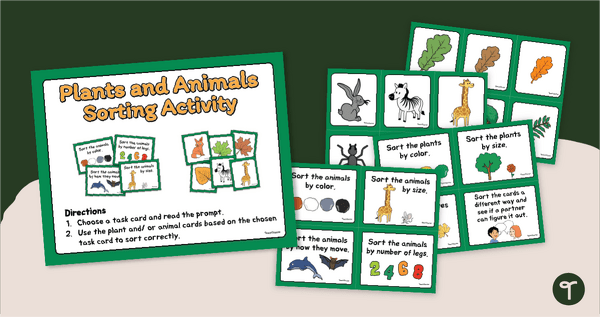
Plant and Animal Sort - Task Cards
Sort plants and animals using different characteristics with a set of task cards and picture cards.
- Plus Plan
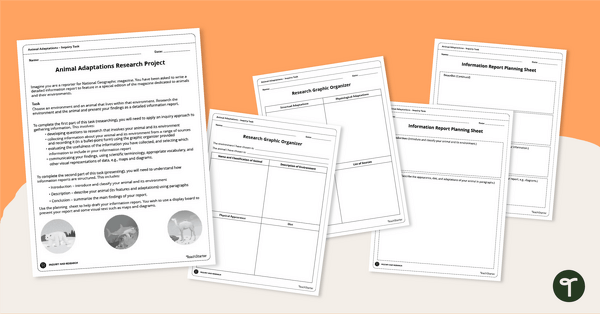
Animals That Adapt - Research Project & Report
Strengthen your students' understanding of conducting research with an Animal Adaptations research project.
- Plus Plan
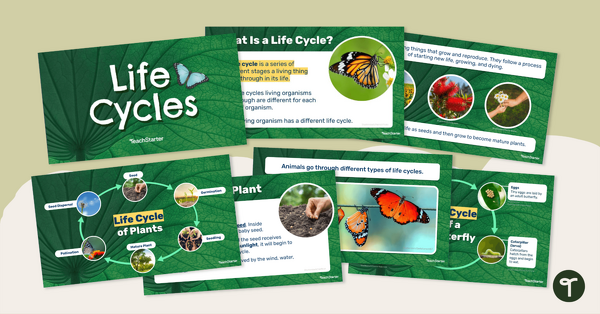
Life Cycles – Instructional Slide Deck
Teach your students about the life cycle of plants and animals with this 19-slide instructional slide deck.
- Free Plan
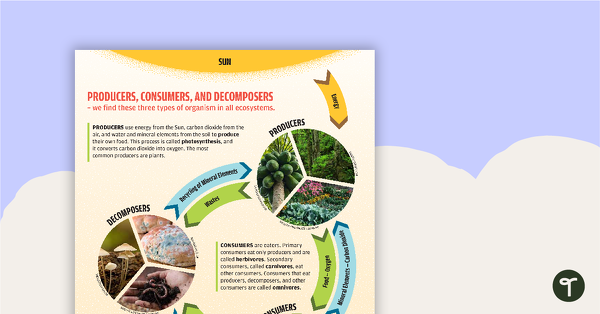
Producer, Consumer, Decomposer - Poster
A poster explaining the roles of the Sun, producers, consumers, and decomposers in the food chain.
- Free Plan
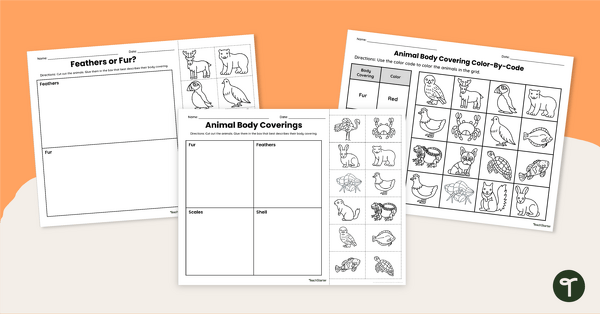
Animals With Scales, Fur, Shells and Feathers Worksheet Pack
Investigate different animal body coverings by sorting and coloring animals with feathers, fur, scales and shells.
- Plus Plan
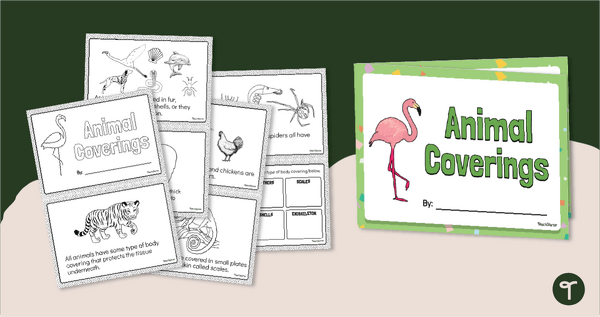
Animal Body Coverings Mini Book
Read and learn about the characteristics of animals with a printable Animal Body Coverings Mini Book.
- Free Plan
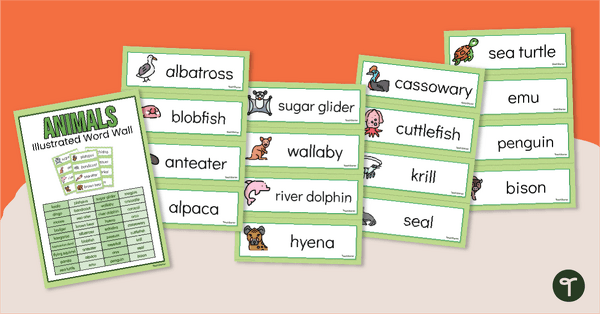
Animal Flash Cards & Word Wall
Read, write and identify animals around the world with a printable animal word wall with pictures.
- Plus Plan
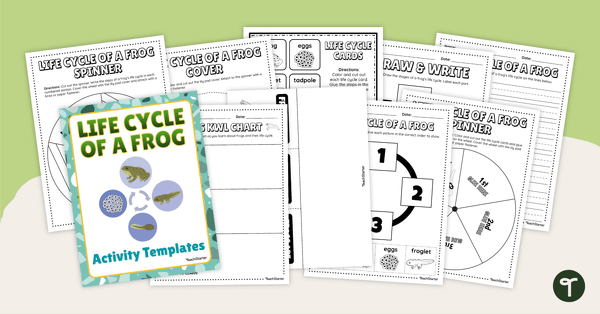
Life Cycle of a Frog – Activity Templates
Organize, record, and display information about the life cycle of a frog with these activity templates.
- Plus Plan
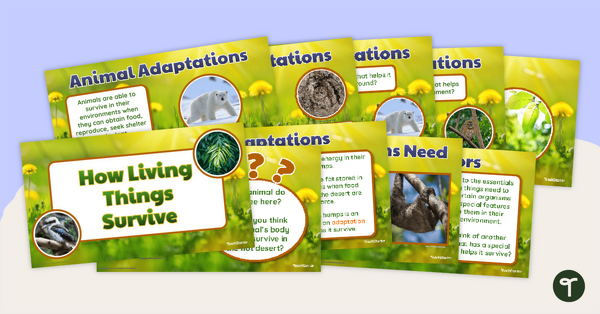
How Living Things Survive – Teaching Presentation
Use this 13-slide teaching presentation to teach your students about the physical characteristics of animals and plants, which help them meet their basic needs.
- Plus Plan
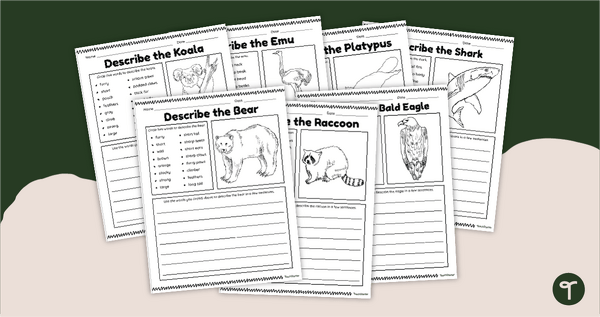
Describing Animal Adaptations - Informative Writing Prompt Worksheets
Write to describe animals and their adaptations with a printable pack of informative writing worksheets.
- Plus Plan
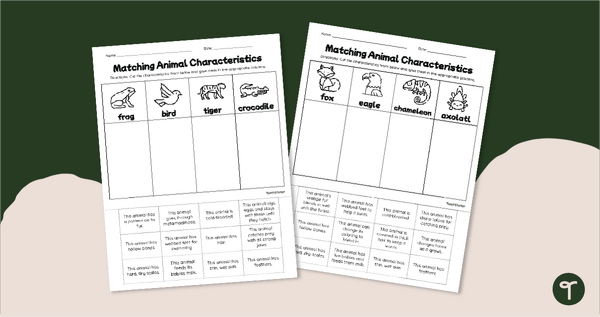
Characteristics of Living Things - Science Worksheets
Identify the common characteristics of different animals and animal classes with a pack of printable Animal Class Characteristic Worksheets.
- Plus Plan

Design the Perfect Dog Breed - Animal Traits Project
Investigate inherited traits that parents pass to their offspring with a Create-a-Puppy selective dog breeding project.
- Free Plan
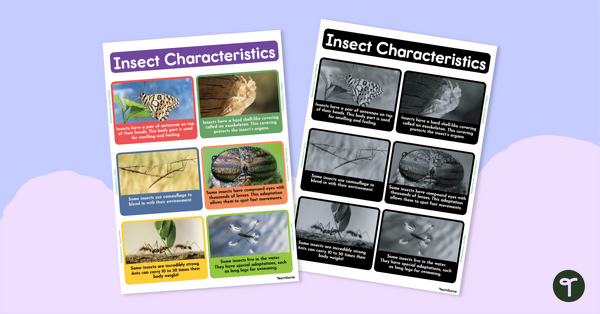
Facts About Insects Poster
Display this poster showcasing interesting insect facts and characteristics in your classroom.
- Plus Plan
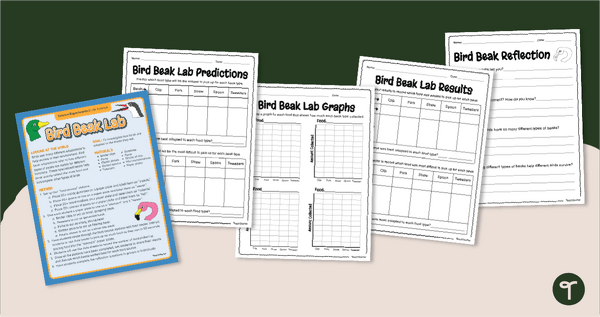
Bird Beak Lab Activity
Discover how birds’ beaks help them find food and survive in the wild with a hands-on Bird Beak Adaptation Lab.
- Plus Plan
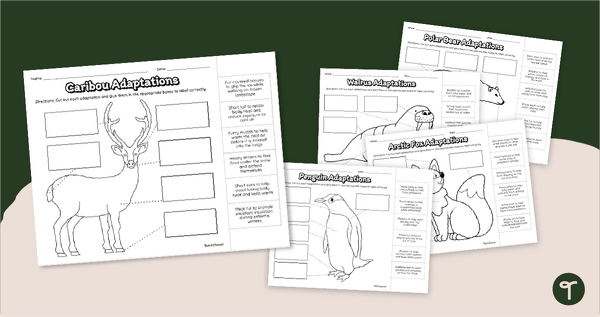
Adaptive Animals of the Arctic - Adaptations Worksheets
Explore the adaptations of polar animals and discover how they help them survive with a set of cut-and-paste labeling activity sheets.
- Plus Plan
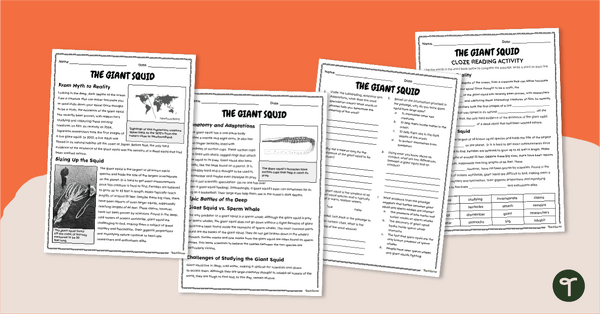
Giant Squid Reading Comprehension Worksheets - 5th Grade
Read and learn about the features and adaptations of the giant squid with reading comprehension worksheets for 5th grade.
- Plus Plan
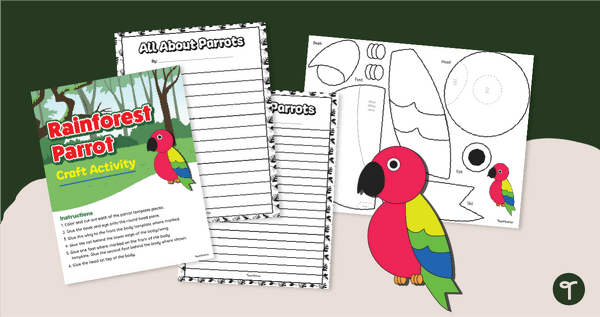
Rainforest Bird Craft & Writing Template
Pair a fun bird craft and informational writing to create a fun jungle-themed bulletin board.
- Plus Plan
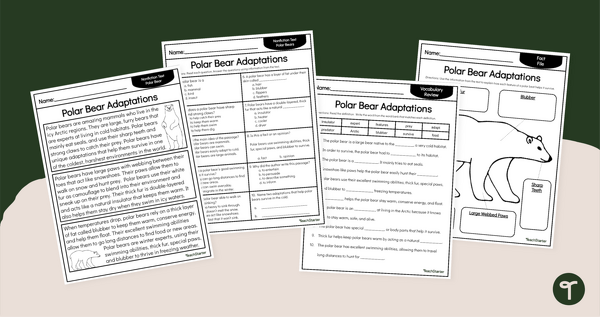
Polar Bear Adaptations Reading Comprehension Pack
Learn about the physical adaptations of the polar bear with a set of printable reading comprehension worksheets for 3rd grade.
- Plus Plan
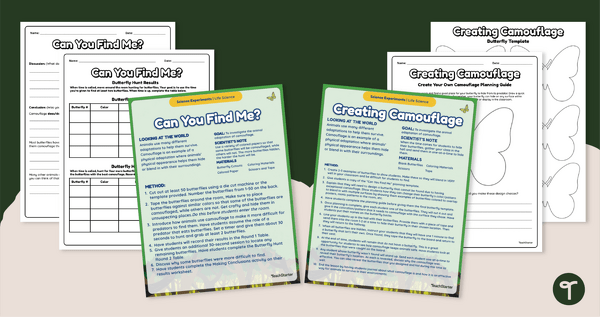
Butterfly Camouflage Activity Pack
Experience camouflage in butterflies and create an engaging scientific simulation with our printable butterfly camouflage activity pack.
- Plus Plan
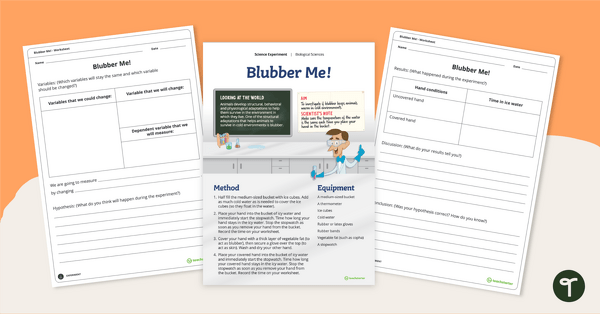
Animal Blubber Experiment - Polar Adaptations Activity
Explores the structural adaptation of blubber with an Arctic Animal Adaptation experiment..
- Plus Plan
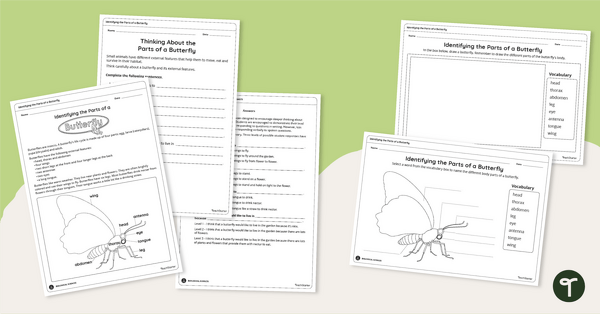
Parts of a Butterfly - Labeling Activity Sheets
Learn about the anatomy of a butterfly with a printable reading passage and butterfly labeling worksheets.
- Plus Plan
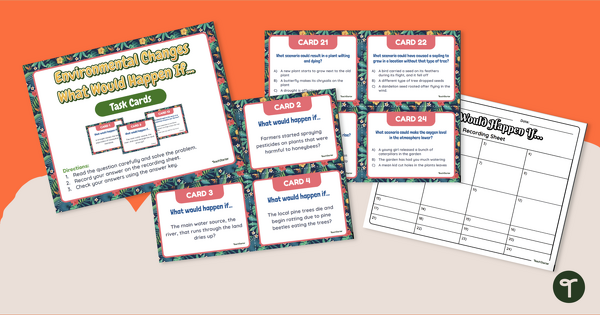
What Could Happen? Environmental Change Task Cards
Predict and identify the effects of environmental change on plants and animals with a set of printable science task cards.
- Plus Plan
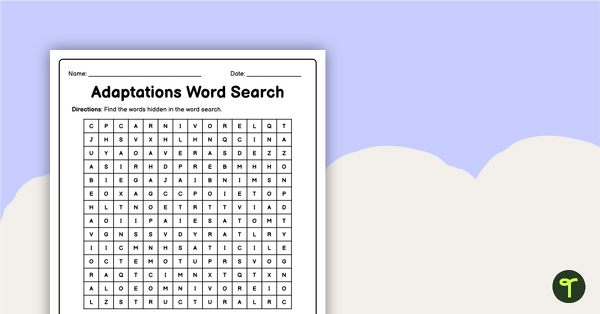
Animal Adaptations Word Search
Develop science vocabulary skills with a printable animal adaptations word search.